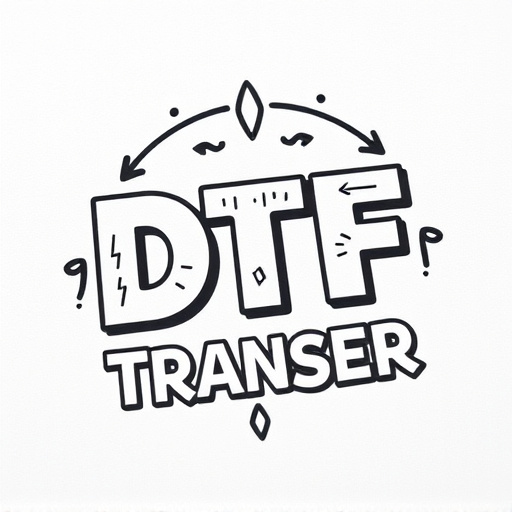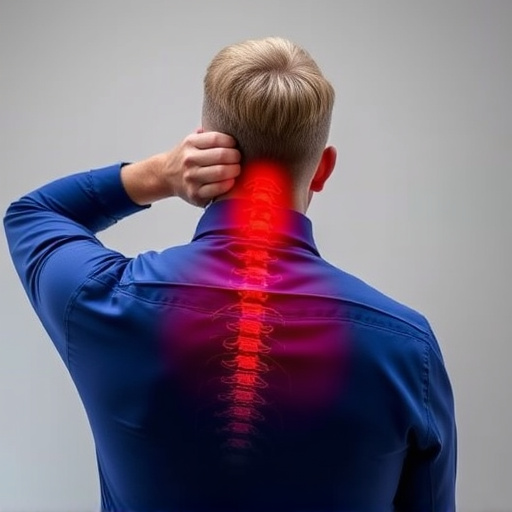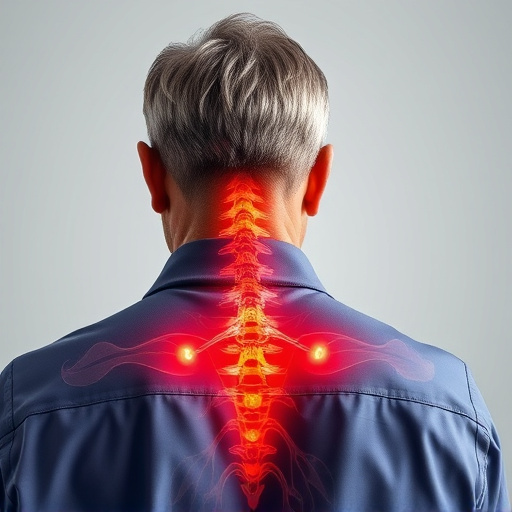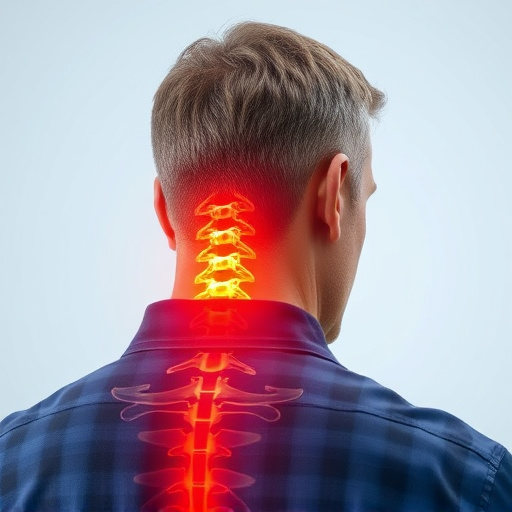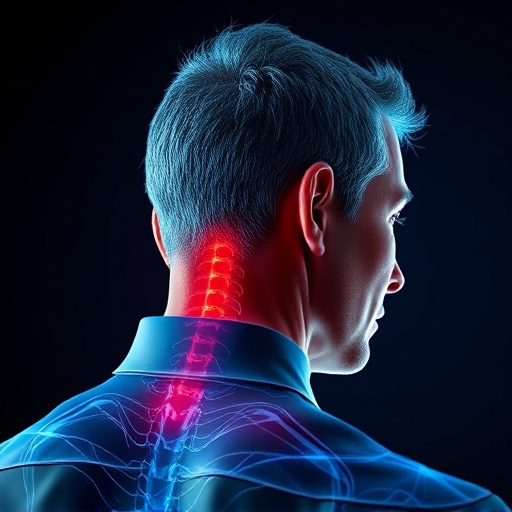Sudden injuries can cause significant neck and back pain, requiring immediate care to prevent further damage. Key steps include ensuring safety, applying ice packs, seeking professional medical advice, and taking over-the-counter pain relievers. Prompt diagnosis allows for targeted treatments like rest, heat/ice therapy, and physical therapy. Early intervention, including immobilization, supportive accessories, and specialized therapeutic techniques, accelerates recovery and offers effective neck and back pain relief. Self-care measures like ice packs and good posture are temporary; professional guidance is essential for proper treatment and managing persistent or worsening symptoms.
Sudden injuries, whether from accidents or sudden movements, can cause significant neck and back pain. This article provides an in-depth guide to immediate care for such injuries, addressing common causes, urgent concerns, and swift relief strategies. We explore the importance of quick action for neck pain, offer tips for back injury care, discuss over-the-counter medications, therapeutic interventions, and self-care practices to prevent further damage and promote faster recovery.
- Understanding Sudden Injuries: Common Causes and Immediate Concerns
- The Importance of Quick Action for Neck Pain Relief
- Back Injury Care: What to Do Immediately
- Over-the-Counter Medications for Fast Relief
- Therapeutic Interventions for Swift Recovery
- Preventing Further Damage: Self-Care Tips for Neck and Back Injuries
Understanding Sudden Injuries: Common Causes and Immediate Concerns
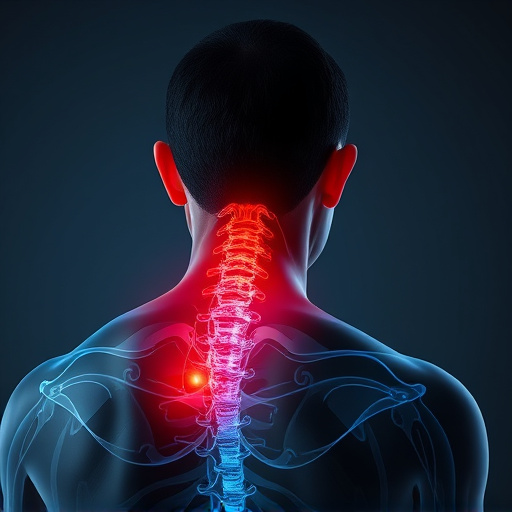
Sudden injuries, often unpredictable, can cause significant distress and pain, especially in the form of neck and back pain. Understanding these injuries is the first step toward providing immediate care. Common causes range from accidents like falls or car crashes to sudden movements that put excessive strain on muscles and ligaments. For instance, a whiplash injury during a traffic accident can result in severe neck pain and discomfort. Similarly, lifting heavy objects incorrectly can lead to back sprains or strains.
Immediate concerns following such injuries include ensuring the individual’s safety and stability. If the injury is serious, emergency medical services should be contacted promptly. For minor cases, initial care might involve applying ice packs to reduce swelling and pain, especially for neck and back pain relief. Keeping the affected area still can also help prevent further damage. It’s crucial to monitor breathing and circulation and seek professional medical advice as soon as possible to rule out any complications or long-term issues.
The Importance of Quick Action for Neck Pain Relief
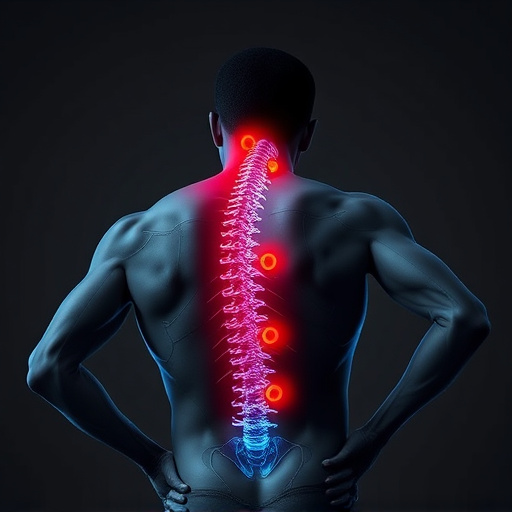
Quick action is crucial in managing sudden neck pain, aiming for effective neck and back pain relief. When a person experiences acute neck strain or injury, every second counts. Delayed treatment can lead to increased inflammation, muscle spasms, and potentially long-term discomfort. The initial steps taken within the first 24-48 hours significantly impact the severity of the condition.
Seeking immediate care enables prompt diagnosis and appropriate treatment modalities like rest, application of ice or heat, and over-the-counter pain relievers to alleviate symptoms. Additionally, a healthcare professional might recommend physical therapy exercises tailored to strengthen neck muscles and improve flexibility, ultimately fostering faster recovery and preventing future neck and back pain episodes.
Back Injury Care: What to Do Immediately
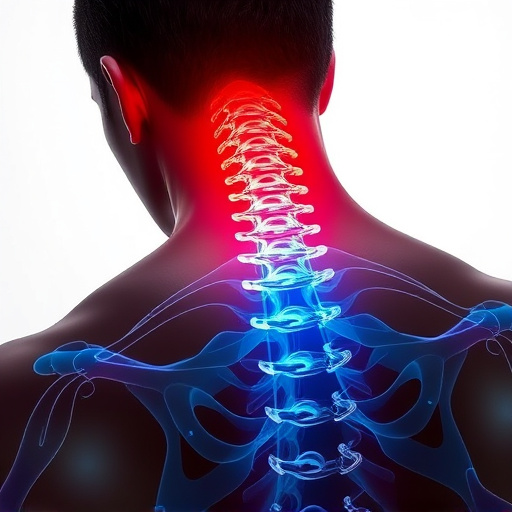
Sudden injuries, especially those affecting the neck and back, can be extremely painful and disabling. The immediate care provided in the first few minutes after an injury can significantly impact recovery and alleviate neck and back pain relief. If you or someone else experiences a sudden injury to the spine, it’s crucial to follow these steps.
First, ensure safety by assessing the environment and controlling any potential hazards. Then, if the person is conscious and able to move, gently encourage them to stay still and avoid further movement. Apply ice packs immediately to reduce inflammation and numb the affected area, which can help ease both pain and swelling. It’s important not to apply direct ice to the skin; use a thin towel or cloth as a barrier. Additionally, supporting the neck and back with pillows or braces during transportation can prevent further damage and provide some comfort. Seek medical attention promptly, even if the injury seems minor, to ensure proper diagnosis and treatment for effective neck and back pain relief.
Over-the-Counter Medications for Fast Relief
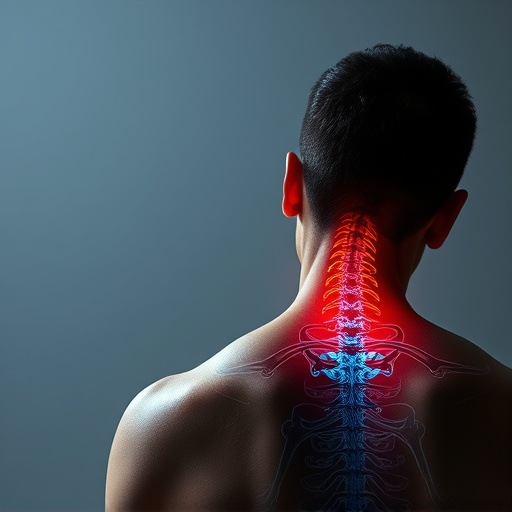
Over-the-counter medications play a significant role in providing immediate care for sudden injuries, especially those affecting the neck and back. These drugs offer fast relief from associated pain, making them easily accessible options for people seeking quick alleviation. Common choices include nonsteroidal anti-inflammatory drugs (NSAIDs) such as ibuprofen or naproxen, which effectively reduce inflammation and manage pain without a prescription.
When dealing with neck or back injuries, these over-the-counter medications can help ease discomfort, allowing individuals to move about more comfortably while healing occurs. They are particularly useful for minor sprains, strains, or muscle aches resulting from sudden accidents or overexertion. However, it’s crucial to follow the recommended dosage instructions and consult a healthcare professional if symptoms persist or worsen, as self-medication may mask underlying issues that require further attention.
Therapeutic Interventions for Swift Recovery
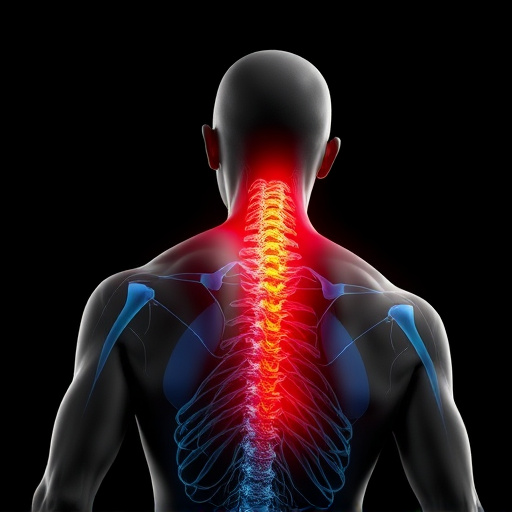
In the aftermath of a sudden injury, swift therapeutic interventions can significantly accelerate recovery. For injuries affecting the neck and back, specialized care is crucial to alleviate pain and restore mobility. Techniques such as manual therapy, including chiropractic adjustments and spinal manipulation, have proven effective in providing immediate pain relief for these regions. These hands-on approaches not only reduce inflammation but also improve spinal alignment, fostering a more efficient healing process.
Additionally, modalities like heat and ice therapy, ultrasound, and electrical stimulation can be employed to further enhance recovery. Heat treatments increase blood flow, promoting the delivery of nutrients essential for tissue repair while reducing muscle stiffness. Conversely, ice packs help minimize swelling and numb the affected area, providing temporary yet valuable pain relief. Combining these therapeutic interventions allows for a comprehensive approach to managing neck and back pain, ensuring patients receive the fastest and most effective care possible.
Preventing Further Damage: Self-Care Tips for Neck and Back Injuries
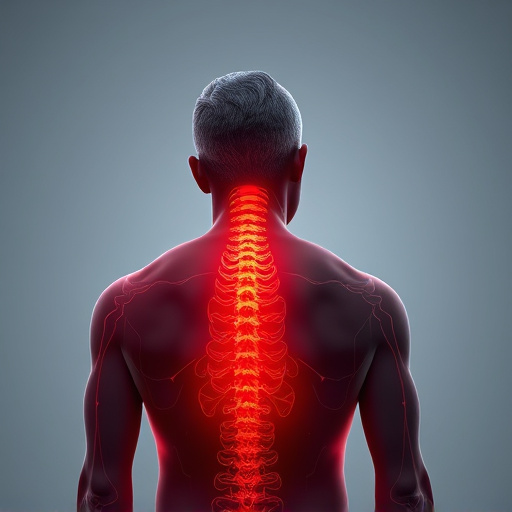
Preventing Further Damage is crucial when dealing with sudden neck or back injuries. The initial step after an injury is to immobilize the affected area to avoid movement that could cause additional harm. Over-the-counter pain relievers like acetaminophen or NSAIDs (nonsteroidal anti-inflammatory drugs) can provide temporary neck and back pain relief. Applying ice packs for 15-20 minutes, several times a day, can help reduce swelling and inflammation.
To aid in recovery, maintain good posture while sitting and standing, avoid heavy lifting or strenuous activities, and consider gentle exercises to strengthen supporting muscles without straining the injured area. Using supportive pillows for neck comfort during sleep can also alleviate pain and promote healing. Remember that these self-care tips offer temporary relief; seeking medical advice remains essential for proper diagnosis and treatment, especially if pain persists or worsens.

